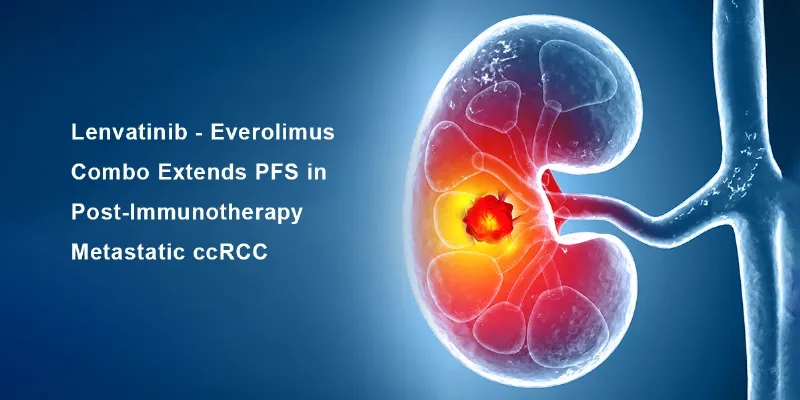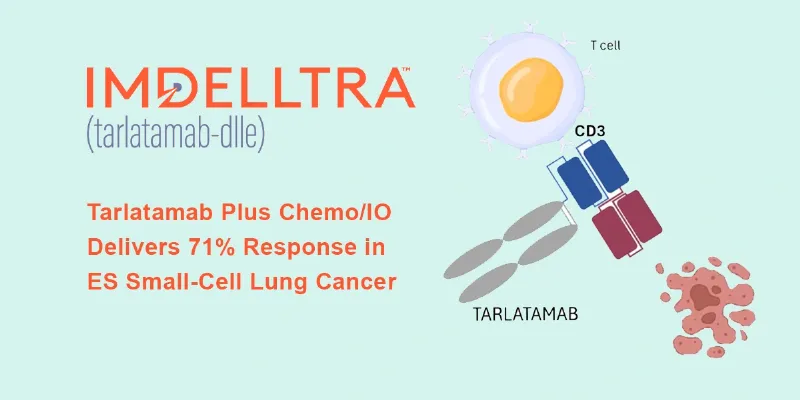Camizestrant Plus CDK4/6 Inhibition Boosts PFS in ESR1+, HR+/HER2– Breast Cancer

26 February 2025
The early findings from the SERENA-6 trial indicate that oral SERD camizestrant provides a “highly statistically significant and clinically meaningful” improvement in progression-free survival for patients with ESR1+, HR+/HER2– advanced breast cancer. The trial suggests that switching to camizestrant in combination with a CDK4/6 inhibitor slows disease progression compared to standard of care.
AstraZeneca announced positive high-level results from a planned interim analysis of the SERENA-6 Phase III trial evaluating camizestrant, the first and only next-generation oral selective estrogen receptor degrader (SERD) and complete estrogen receptor (ER) antagonist to demonstrate a first-line benefit when combined with widely approved cyclin-dependent kinase (CDK) 4/6 inhibitors.
According to topline data, patients with HR-positive, HER2-negative advanced breast cancer harboring an emergent ESR1 mutation benefited from switching to camizestrant plus palbociclib (Ibrance), ribociclib (Kisqali), or abemaciclib (Verzenio), compared with continuing a standard-of-care aromatase inhibitor and CDK 4/6 inhibitor. Notably, safety and tolerability were both favourable.
Targeting an Emerging Mutation
Researchers used circulating tumour DNA (ctDNA) monitoring during routine tumour scan visits to detect the emergence of this ESR1 mutation at its earliest stages. Once the mutation was confirmed, patients were switched from aromatase inhibitor (AI) therapy (anastrozole or letrozole) to camizestrant, while continuing on the same CDK4/6 inhibitor.
The result was a marked increase in the time before the disease progressed, meeting the study’s primary endpoint of progression-free survival. According to Professor François-Clément Bidard of Institut Curie, and co-principal investigator of SERENA-6, “Patients have an urgent need for new treatments that delay disease progression on 1st-line endocrine-based therapies. The results show that switching from an aromatase inhibitor to camizestrant in combination with any of the three CDK4/6 inhibitors … delays progression of disease and extends the benefit of 1st-line treatment.”
First-Line Combination with CDK4/6 Inhibitors
Camizestrant is a next-generation oral SERD and a complete estrogen receptor (ER) antagonist. This makes it the first investigational therapy of its kind to show benefit in combination with widely approved CDK4/6 inhibitors in the first-line setting for HR+, HER2- advanced breast cancer.
Susan Galbraith, Executive Vice President, Oncology Haematology R&D at AstraZeneca, said: “These impressive results demonstrate the versatility of camizestrant in combination with all the widely approved CDK4/6 inhibitors … This critical read-out moves us one step closer to realising the potential of camizestrant to become a new standard-of-care as we look to shift the treatment paradigm and establish this new endocrine therapy backbone in HR-positive breast cancer.”
Safety Profile and Next Steps
No new safety concerns emerged in the SERENA-6 trial, and the rates of treatment discontinuation were low and similar across both the camizestrant and AI treatment arms. While the key secondary endpoints—time to second disease progression (PFS2) and overall survival (OS)—were immature at the time of interim analysis, there was a favourable trend for PFS2 in the camizestrant arm. The trial will continue to further investigate these endpoints.
SERENA-6 enrolled 315 patients with HR+, HER2- advanced breast cancer who were already receiving first-line therapy with a CDK4/6 inhibitor and an AI. Approximately 30% of patients with endocrine-sensitive HR+ disease develop ESR1+ during first-line therapy without showing signs of disease progression, highlighting the importance of early intervention strategies like those used in this trial.
Why ESR1 Matters
Mutations in the ESR1 gene are a key driver of endocrine resistance, often leading to reduced effectiveness of standard therapies such as aromatase inhibitors. As these mutations accumulate over time, resistance to endocrine therapy grows, making disease more difficult to control. ESR1 mutations are routinely tested for in clinical practice due to their link to poorer outcomes.
By detecting these mutations in circulating tumour DNA, doctors may switch patients onto a more effective therapy sooner. SERENA-6 is notable as the first global, double-blind, registrational Phase III trial to take this ctDNA-guided approach to inform treatment strategy before clinical progression.











Comments
No Comments Yet!